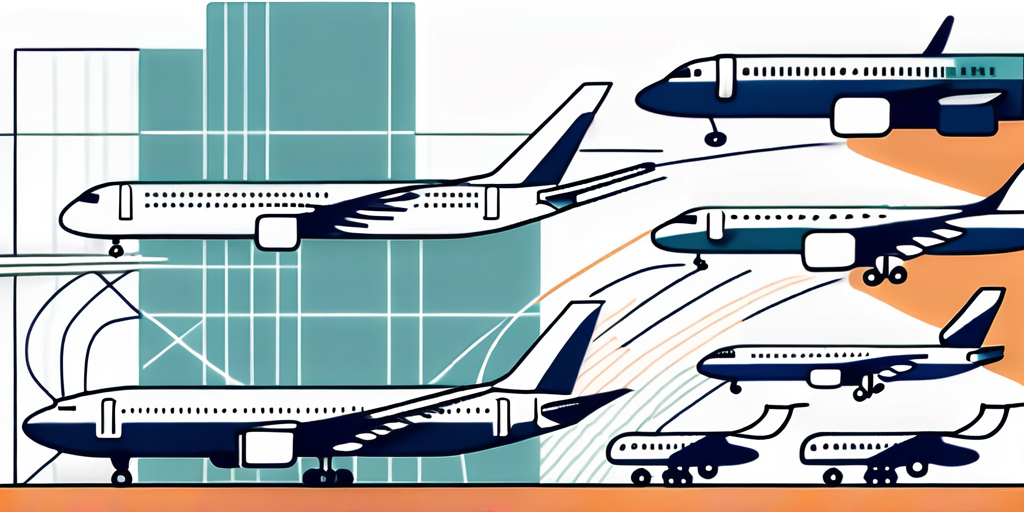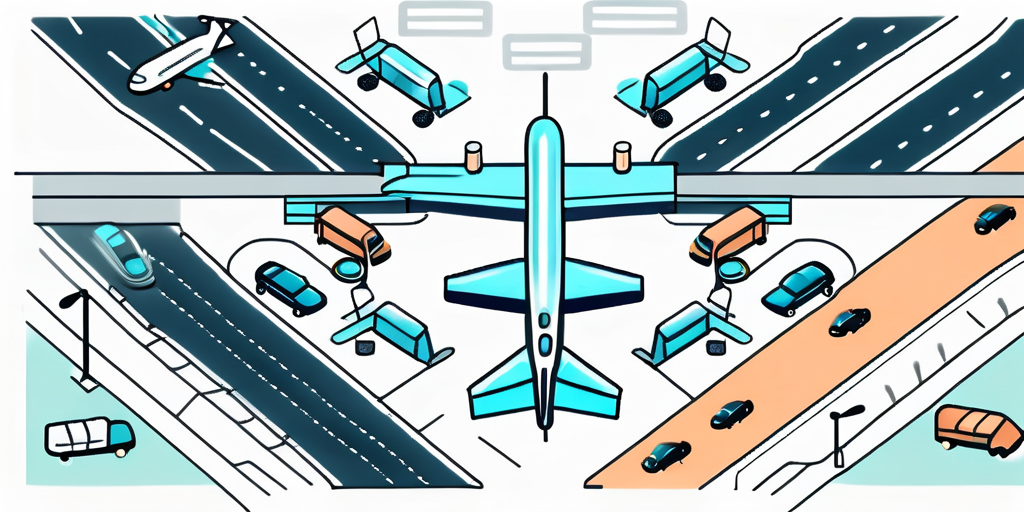Essential Guide to Connecting Flights: What You Need to Know
Ensure smooth transitions between flights with our essential guide to connecting flights. Learn tips for a stress-free travel.
If you're a frequent traveler or someone who loves exploring new destinations, you've likely come across the term "connecting flights." But what exactly are they, and how can you make the most of this travel option? In this ultimate guide, we'll delve into the basics of connecting flights, provide tips on booking them, navigate airport transfers, and offer advice for a smooth connecting flight experience.
Understanding the Basics of Connecting Flights
Before diving into the details, let's first define what a connecting flight entails. In simple terms, a connecting flight is when you have to change planes at an intermediate airport to reach your final destination. This often occurs when there are no direct flights available or when you choose to include layovers for cost-saving or exploring purposes.

What is a Connecting Flight?
A connecting flight involves transferring from one aircraft to another during your journey. It requires thoughtful planning and coordination to ensure a seamless transition between flights. Understanding the logistics and benefits can help you make informed decisions when booking your travels.
Benefits of Choosing Connecting Flights
Connecting flights offer several advantages for travelers. Firstly, they can be more cost-effective, as airlines often offer better deals on flights with layovers compared to non-stop options. Additionally, connecting flights can provide opportunities for exploration. By intentionally selecting layovers in exciting locations, you can squeeze in a short visit to that city or country before continuing your journey.
Imagine this: you're on your way to your dream destination, and you have a connecting flight in a vibrant city. Instead of waiting at the airport, you decide to venture out and explore. You visit local markets, taste exotic cuisine, and immerse yourself in the culture of that place. These unexpected adventures can add an extra layer of excitement to your trip, making it truly memorable.
Potential Drawbacks of Connecting Flights
While connecting flights have their advantages, it's important to consider potential drawbacks as well. The primary concern is the possibility of delays. Since you'll be changing planes, any delay in one leg of your journey could impact your connections. It's crucial to leave ample time between flights to mitigate this risk.
However, delays don't always have to be a source of frustration. Picture this: you're at the airport, waiting for your connecting flight when you strike up a conversation with a fellow traveler. You discover that they are an expert in a field you're passionate about. You spend the layover discussing your shared interests, exchanging ideas, and forging a new friendship. These unexpected encounters can turn a delay into a serendipitous moment of connection.
Another drawback is the increased travel time. Connecting flights generally take longer than direct flights, as you have to account for the layover duration and any additional time spent in transit. However, with careful planning, this extra time can be utilized effectively.
Imagine having a long layover in a bustling airport. Instead of sitting idly, you decide to explore the airport's amenities. You stumble upon an art gallery showcasing local artists, a spa offering rejuvenating treatments, and even a mini-golf course to challenge your skills. These unexpected discoveries can turn a layover into a mini-adventure, making your journey more enjoyable.
How to Book Connecting Flights
Now that you understand the basics of connecting flights, let's explore different methods for booking them. Whether you prefer to book online, seek assistance from travel agencies, or directly book through airlines, we'll discuss the pros and cons of each approach.

Online Booking Tips
Booking connecting flights online offers convenience and flexibility. With numerous travel websites and aggregators available, you can easily compare prices and select the best options for your journey. Be mindful of the layover durations, and check if the connecting airports are well-connected to the city center or offer amenities to make your wait more comfortable.
When booking online, it's important to be aware of additional factors that can impact your travel experience. For example, some airlines may have restrictions on baggage allowances or charge extra fees for certain services. It's always a good idea to read the fine print and understand the terms and conditions before finalizing your booking. Additionally, consider checking customer reviews and ratings for the airlines you are considering, as this can give you valuable insights into the quality of service and overall customer satisfaction.
Travel Agency Assistance
If you prefer a more personalized approach, consider reaching out to a travel agency for assistance. Experienced travel agents can help you navigate complex itineraries, find the most efficient and cost-effective connections, and provide valuable insights based on their expertise. They can also assist in securing the best deals and handling any unexpected complications that may arise during your trip.
When working with a travel agency, it's important to communicate your preferences and requirements clearly. This will help the agent tailor the itinerary to your needs and ensure a smooth and enjoyable travel experience. Additionally, travel agencies often have access to exclusive deals and promotions, so they can help you find the best value for your money. Remember, the expertise and personalized service offered by travel agents can save you time and effort, making your journey stress-free and enjoyable.
Direct Airline Booking
Booking directly through airlines offers certain advantages as well. Airlines often have access to exclusive deals, and you can earn loyalty rewards for future travel. Additionally, direct bookings provide better customer service in case of any flight changes or disruptions. Keep an eye out for any airline-specific perks or programs that may enhance your overall travel experience.
When booking directly with an airline, it's important to be aware of any additional fees or charges that may apply. Some airlines may charge extra for services such as seat selection, in-flight meals, or checked baggage. It's a good idea to review the airline's policies and fees before making your booking, so you can budget accordingly and avoid any surprises later on. Additionally, consider signing up for the airline's loyalty program, as this can provide you with additional benefits and rewards for your future travels.
Navigating Airport Transfers
Once you've booked your connecting flights, it's essential to familiarize yourself with the process of airport transfers. Let's explore some key considerations to ensure a smooth transition between flights.

Understanding Airport Layouts
Airports can be vast and bustling, making it crucial to understand their layouts before you arrive. Reviewing airport maps and signage will help you navigate through terminals more efficiently. Some airports even provide interactive maps on their websites or mobile apps, enabling you to plan your route in advance.
For example, imagine you're traveling through the sprawling Dubai International Airport. With three terminals and multiple concourses, it's easy to get disoriented. However, with the help of their user-friendly mobile app, you can easily find your way around. The app provides detailed maps, highlighting key facilities like restrooms, lounges, and dining options. It even offers real-time updates on gate changes, ensuring you stay informed throughout your journey.
Time Management Between Flights
Managing your time effectively is essential for successful airport transfers. Allow ample time between flights to account for potential delays, security checks, and baggage collection. Consider factors such as immigration and customs procedures, as well as any transport options required to reach your connecting gate. In some cases, you may need to switch terminals or take a shuttle, so plan accordingly.
Let's say you have a layover at Amsterdam Airport Schiphol. Known for its efficiency, this airport provides a seamless experience for connecting passengers. With a minimum connection time of just 40 minutes, you can confidently navigate through the airport without feeling rushed. Plus, Schiphol offers a wide range of amenities, including duty-free shopping, restaurants, and even a museum, allowing you to make the most of your time between flights.
Dealing with Customs and Immigration
When traveling internationally, going through customs and immigration can add an extra layer of complexity to your connecting flight experience. Familiarize yourself with the requirements of the countries you'll be transiting through and ensure you have the necessary documentation. Some airports offer expedited processing for passengers with connecting flights, so explore any available options to streamline your journey.
Take, for instance, Singapore Changi Airport, renowned for its efficiency and passenger-friendly services. If you have a layover in Singapore, you can enjoy the convenience of their automated immigration clearance system, known as the Immigration Automated Clearance System (eIACS). This innovative technology allows eligible passengers to clear immigration quickly and efficiently, reducing waiting times and ensuring a smooth transit experience.
Remember, a little preparation goes a long way when it comes to navigating airport transfers. By understanding airport layouts, managing your time effectively, and familiarizing yourself with customs and immigration procedures, you can ensure a seamless transition between flights. Bon voyage!
Tips for a Smooth Connecting Flight Experience
Now that you're well-prepared for your connecting flights, let's explore some tips to ensure a stress-free and enjoyable experience.
Packing for Convenience
When packing for connecting flights, prioritize convenience and ease of movement. Opt for a lightweight and compact carry-on bag to minimize the hassle of lugging around excessive luggage during layovers. Consider essential items such as chargers, travel adapters, and a change of clothes in case of unforeseen circumstances.
Maximizing Layover Time
Instead of idly waiting during layovers, use the opportunity to explore the airport or nearby attractions if time permits. Many airports offer amenities like lounges, restaurants, and shops to make your layover more enjoyable. Researching these options in advance will help you make the most of your stopover.
Handling Flight Delays and Cancellations
Despite careful planning, flight delays and cancellations can still occur. In such situations, stay calm and communicate with airline staff for alternative arrangements. Familiarize yourself with the airline's policies regarding compensation and rebooking options. Having travel insurance can provide added protection and peace of mind in case of unexpected disruptions.
As you embark on your next travel adventure, keep this ultimate guide to connecting flights in mind. With careful planning, smart booking choices, and a positive mindset, connecting flights can offer a unique and rewarding travel experience. Embrace the journey, explore new places, and make lasting memories along the way.
Get the Compensation You Deserve with ClaimCompass
Don't let flight disruptions ruin your travel plans. If you've experienced delays, cancellations, or overbookings on your connecting flights, ClaimCompass is here to help. We specialize in securing up to 600€ in compensation for air passengers under EU Regulation 261/2004. It's effortless to check your eligibility with our free compensation calculator—just enter your flight details, and we'll take care of the rest. Remember, there's no cost to you unless we succeed in claiming your compensation. If your journey within Europe gets disrupted, make sure to Submit a claim with ClaimCompass, and let us fight for your rights while you focus on your next destination.
